Less Is More
Subtractive Solutions
Why Our Brains Miss Opportunities to Improve Through Subtraction
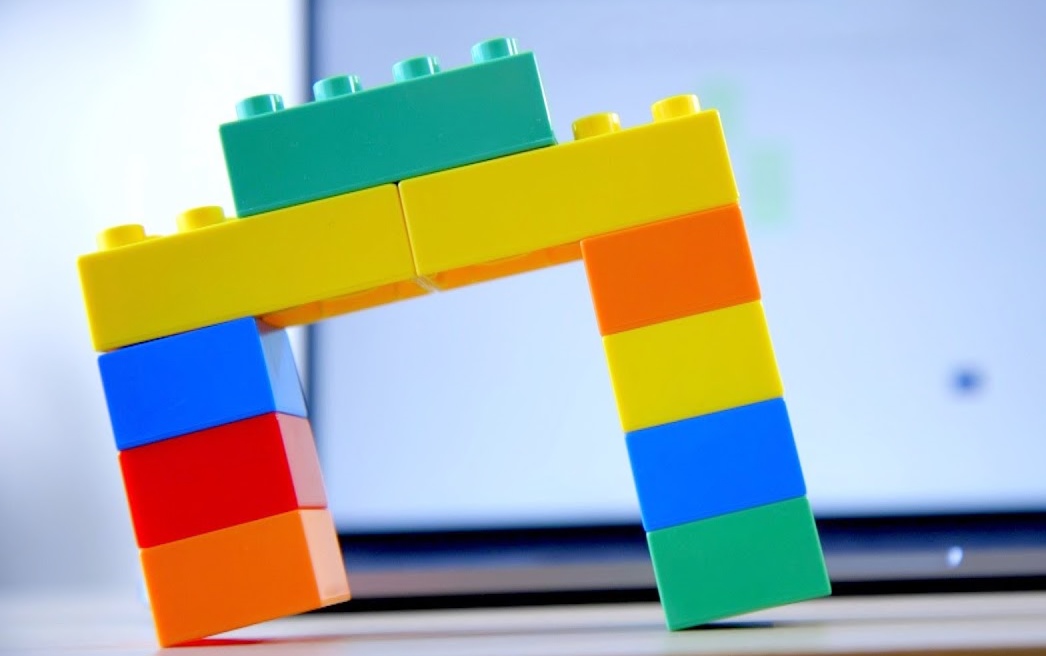
Overview: Less Is More - Subtractive Solutions
The saying "Less is more" is a phrase adopted by and attributed to architect Ludwig Mies van der Rohe in 1947.
But if we truly believed that less is more, why do we overdo so much?
Why do we so rarely look at a situation, object, idea or a concept that needs improving [in all contexts] and consider removing something as a solution?
Why
do our brains miss opportunities to improve through subtraction?
Why do we nearly always add something, regardless of whether it helps or
not.
A new study, featured on the cover of Nature, in which researchers at University of Virginia explain the human tendency to make change through addition, explains why.
"It happens in engineering design, which is my main interest," said Leidy Klotz, Copenhaver Associate Professor in the Department of Engineering Systems and Environment. "But it also happens in writing, cooking and everything else -- just think about your own work and you will see it"
Klotz collaborated with three colleagues from the Batten School of Leadership and Public Policy on the interdisciplinary research that shows just how additive we are by nature.
Batten public policy and psychology faculty, assistant professor Gabrielle Adams and associate professor Benjamin Converse, and former Batten postdoctoral fellow Andrew Hales, worked with Klotz on a series of observational studies and experiments to study the phenomenon.
There are two broad possibilities for why people systematically default to additive solutions:
[1] We generate ideas for both possibilities and disproportionately discard subtractive solutions, or
[2] We overlook subtractive ideas altogether
We overlook subtractive solutions because they require more effort
The research focused on the second possibility.
"Additive ideas come to mind quickly and easily, but subtractive ideas require more cognitive effort," associate professor Benjamin Converse said.
"Because people are often moving fast and working with the first ideas that come to mind, they end up accepting additive solutions without considering subtraction at all."
The researchers think there may be a self-reinforcing effect.
"The more often people rely on additive strategies, the more cognitively accessible they become," assistant professor Gabrielle Adams said.
"Over time, the habit of looking for additive ideas may get stronger and stronger, and in the long run, we end up missing out on many opportunities to improve the world by subtraction."
How to reduce your subtraction bias?
- Ask yourself “What are the things that I should avoid?” rather than asking “What should I do?”
- Ask your clients/customers what aspects of your existing services are cumbersome for them and that you could subtract?
- Rather than relying on certain technology to be more creative, identify sources of distraction, avoid interruptions and have more time to work on ideas.
- Rather than buying diet foods and pills to lose weight, eliminate specific foods for a healthier diet.
- Optimise for minimalism/less is more -in some environments this will mean decreasing the amount of time available to create a solution, in other environments this will mean increasing the time available. But the key point is optimizing for less is more.
How to use the Subtraction technique to innovate:
[This process can be adapted to different and non-commercial environments]:
- List the key components of your product or service.
- Pick one component and imagine eliminating it.
- Visualise the product or service without the key component you eliminated.
- Identify potential benefits and value of the new situation.
- If you see value in removing a component, see if you can replace the function of this component.
- Turn your idea into a valuable new product or service.
Return from "Less Is More" to: Mental Models
LATEST ARTICLES
How to See Your Thoughts Without Becoming the Story
 A Practical Guide to Thought-Awareness. You can spend your life inside the stories of your mind without ever learning how to see your thoughts clearly and objectively. Most of the stuff we tell oursel…
A Practical Guide to Thought-Awareness. You can spend your life inside the stories of your mind without ever learning how to see your thoughts clearly and objectively. Most of the stuff we tell oursel…The Collison Decision Matrix - A Simple Framework for Better Choices
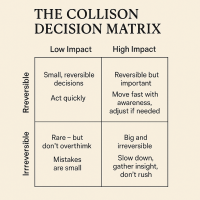 The Collison Decision Matrix Is A Practical Everyday Thinking Tool. Most of us spend a surprising amount of time worrying about decisions. From small ones such as what to wear, what to eat, what to te…
The Collison Decision Matrix Is A Practical Everyday Thinking Tool. Most of us spend a surprising amount of time worrying about decisions. From small ones such as what to wear, what to eat, what to te…The Power Of Asking The Right Question
 The Power Of Asking The Right Question Lies In The Quest For Insight. To experience the power of asking the right question you must develop the practice of asking questions. The best way to improve th…
The Power Of Asking The Right Question Lies In The Quest For Insight. To experience the power of asking the right question you must develop the practice of asking questions. The best way to improve th…Site Pathways
 Here is a site pathway to help new readers of Zen-Tools navigate the material on this site. Each pathway is based around one of the many key themes covered on this site and contain a 150 word introduc…
Here is a site pathway to help new readers of Zen-Tools navigate the material on this site. Each pathway is based around one of the many key themes covered on this site and contain a 150 word introduc…How To Live With Contradiction - Beyond Thought Let Stillness Speak
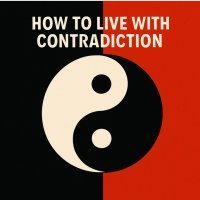 A major impact on so many peoples' lives is the situational contradiction of unfilled realistic expectations. So where does all this leave us? Well here we are, with mental equipment that is more lim…
A major impact on so many peoples' lives is the situational contradiction of unfilled realistic expectations. So where does all this leave us? Well here we are, with mental equipment that is more lim…How To Trust The Process Of Mindfulness - Right Now
 In mindfulness, the process isn’t some distant goal — it's what is happening right now. When we talk about how to trust the process of mindfulness the credibility of the process is heavily dependent…
In mindfulness, the process isn’t some distant goal — it's what is happening right now. When we talk about how to trust the process of mindfulness the credibility of the process is heavily dependent…Inner Mastery For Outer Impact - Mental Clarity For Effective Action
 Insights only matter if they translate into consistent action. In a world crowded with quick fixes and motivational soundbites, the theme “Inner Mastery for Outer Impact” calls us to something more e…
Insights only matter if they translate into consistent action. In a world crowded with quick fixes and motivational soundbites, the theme “Inner Mastery for Outer Impact” calls us to something more e…The Wise Advocate - Helping You Achieve The Very Best Outcome
 The focus of your attention in critical moments of choice either builds or restricts your capacity for achieving the best outcome. When we talk of 'The Wise Advocate' its easy to think of the consigl…
The focus of your attention in critical moments of choice either builds or restricts your capacity for achieving the best outcome. When we talk of 'The Wise Advocate' its easy to think of the consigl…Trust The Process - Beyond The Cliche
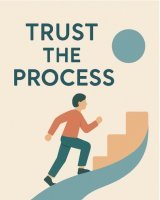 The phrase "trust the process" has become a cliche, the woo-woo mantra of the "self help" industry. Those three little words feel like they ought to mean something useful but hidden behind them are a…
The phrase "trust the process" has become a cliche, the woo-woo mantra of the "self help" industry. Those three little words feel like they ought to mean something useful but hidden behind them are a…The Dopamine Delusion - Why Anticipation Beats Achievement
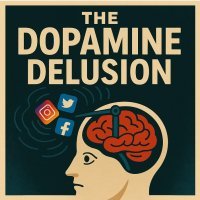 The thrill we feel is not in the having, but in the wanting. The more we have, the more we want. The more things we acquire and the easier things get for us, the more discontent we feel. The more spo…
The thrill we feel is not in the having, but in the wanting. The more we have, the more we want. The more things we acquire and the easier things get for us, the more discontent we feel. The more spo…The Power Of Silence Is Experienced In Your Use Of Language
 Practise the "Beneficial Neurological Delay" for optimal comprehension. The power of silence is experienced in your use of language, specifically: - How you formulate the words you use to think and in…
Practise the "Beneficial Neurological Delay" for optimal comprehension. The power of silence is experienced in your use of language, specifically: - How you formulate the words you use to think and in…Dealing With Setbacks - 5 Questions To Help You Face Discomfort
 How To Counter The Cognitive Shock Of A Setback. Setbacks challenge your instinctual desire for control and comfort, making it unnatural to respond with calm or acceptance. The reason for these instin…
How To Counter The Cognitive Shock Of A Setback. Setbacks challenge your instinctual desire for control and comfort, making it unnatural to respond with calm or acceptance. The reason for these instin…